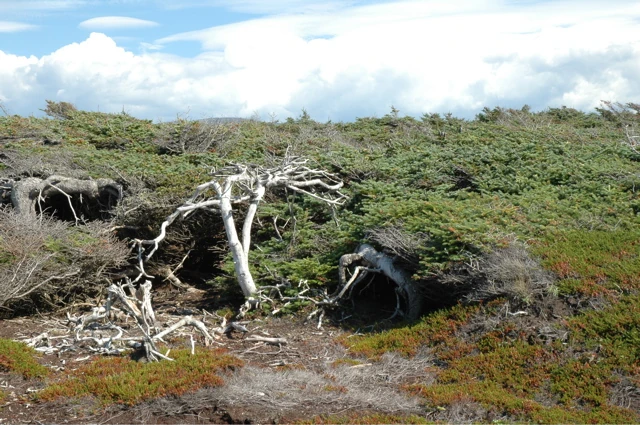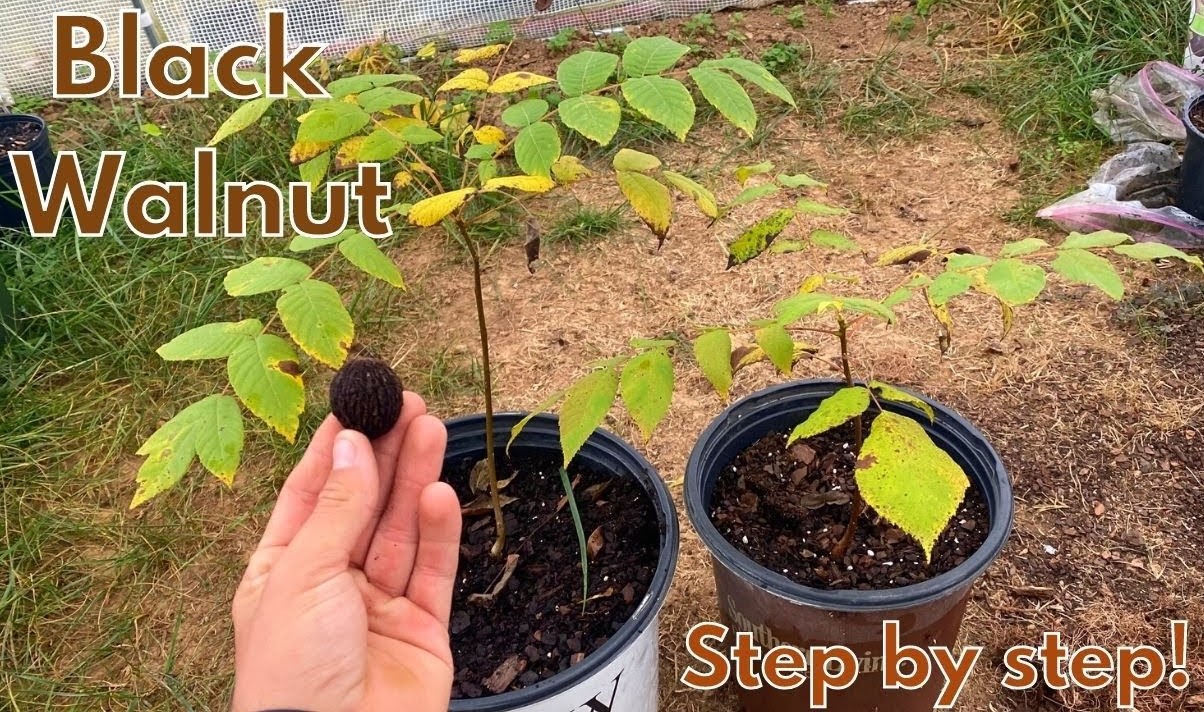Tuckamore trees, also known as “tuckamore” are a unique form of stunted, twisted trees predominantly found in coastal regions of eastern Canada, particularly in Newfoundland and Labrador. These remarkable trees have adapted to harsh environmental conditions, creating a striking landscape that tells the story of resilience and survival. This article explores the definition of tuckamore trees, the climatic conditions necessary for their growth, and their cultural significance within the communities that cherish them.
Definition of Tuckamore Trees
Tuckamore trees are a distinctive and unique form of tree that primarily consists of Larix laricina (tamarack or eastern larch) and can also include Picea mariana (black spruce) and other coniferous species. These trees are notable for their stunted growth and twisted, gnarled forms, which are adaptations to the harsh environmental conditions of their coastal habitats. The term “tuckamore” is derived from the Mi’kmaq word meaning “twisted tree,” highlighting their characteristic appearance.
Morphological Characteristics
- Growth Habit: Tuckamore trees often exhibit a low-growing, shrub-like form, typically reaching heights of only 1 to 5 meters (3 to 16 feet). Their branches tend to spread horizontally, creating dense thickets that can provide shelter for wildlife.
- Twisted and Gnarled Shapes: The twisting and gnarling of these trees result from strong winds and the accumulation of snow and ice during the winter months. This unique morphology not only adds to their aesthetic appeal but also serves a functional purpose by allowing the trees to withstand harsh environmental stresses.
- Needle Structure: Tuckamore trees possess short, soft needles, which can change color with the seasons. In the fall, the needles of tamarack turn a vibrant yellow before shedding, while black spruce retains its needles throughout the winter.
Ecological Role
- Habitat: Tuckamore trees create vital habitats for various species of birds, mammals, and insects. The dense foliage provides nesting sites and shelter, while the trees’ roots help stabilize the soil and prevent erosion along coastal areas.
- Biodiversity: The unique growth forms and microhabitats associated with these interwoven trees contribute to local biodiversity, supporting a range of species adapted to these specific environments.
Cultural Significance
Tuckamore trees are not only significant from an ecological perspective but also hold cultural importance. They are often associated with Indigenous folklore and traditions, symbolizing resilience, survival, and the connection between nature and community. Their unique forms have inspired local artists and craftspeople, who use the wood for creating functional and artistic pieces.
In summary, tuckamore trees are remarkable natural formations that represent the adaptability of life in challenging environments. Their distinctive characteristics, ecological roles, and cultural significance make them an essential part of the coastal landscapes of eastern Canada.

Climatic Conditions for Growth
Tuckamore trees thrive in specific climatic conditions that contribute to their unique morphology and resilience. Understanding these environmental factors is essential for appreciating how these trees adapt to their harsh surroundings.
Temperature
- Cold Climate: Tuckamore trees are well-suited to cold climates, as they typically inhabit regions with long, harsh winters. They can withstand sub-zero temperatures, which are common in Newfoundland and Labrador.
- Growing Season: The growing season for tuckamore trees is relatively short, often lasting only a few months due to the cold climate. During this period, the trees must take full advantage of available sunlight to produce the energy needed for growth and reproduction.
Wind Exposure
- High Winds: Tuckamore trees are commonly found in areas exposed to strong, persistent winds, especially along coastal regions. This exposure plays a significant role in shaping their growth forms, leading to their characteristic twisted and gnarled appearance.
- Salt Spray: The proximity to the ocean means that these trees are also subjected to salt spray from ocean waves. This salt can be detrimental to many plant species, but tuckamore trees have adapted to tolerate it, allowing them to thrive in coastal environments where other trees may struggle.
Soil Conditions
- Poor, Rocky Soils: Tuckamore trees typically grow in shallow, rocky, and nutrient-poor soils. These soils are often characterized by low organic matter content, making it challenging for many plant species to establish themselves.
- Drainage: Good drainage is crucial for tuckamore trees, as they are prone to root rot in waterlogged conditions. The rocky substrates found in their native habitats usually provide adequate drainage, allowing the trees to establish strong root systems.
Precipitation
- Moderate to Low Precipitation: While tuckamore trees can survive in regions with varying precipitation levels, they generally thrive in areas with moderate to low annual rainfall. This is particularly true in coastal environments where precipitation can come primarily in the form of snow during the winter months.
- Snow Accumulation: The accumulation of snow in winter is significant for tuckamore trees, as it insulates their roots and provides moisture during the thawing spring months. The weight of the snow also influences the trees’ growth patterns, contributing to their distinctive forms.
Light Conditions
- Full Sunlight: Tuckamore trees typically require full sunlight for optimal growth. While they can tolerate some shade, exposure to direct sunlight helps them produce the energy needed for survival in nutrient-poor soils.
- Photoperiod: The length of daylight during the growing season influences the trees’ physiological processes, including photosynthesis and flowering. Tuckamore trees have adapted to the specific photoperiods of their native regions, which can vary throughout the year.
Conclusion
The climatic conditions in which tuckamore trees thrive are characterized by cold temperatures, strong winds, poor soils, moderate precipitation, and full sunlight. These factors have shaped the trees’ unique growth forms and adaptations, allowing them to survive in some of the most challenging environments in eastern Canada. Their resilience not only highlights the remarkable adaptability of nature but also underscores the importance of preserving these unique ecosystems for future generations.

Range and Distribution of Tuckamore Trees
Tuckamore trees are not defined by a particular species, but rather by their unique form, shaped by the harsh environmental conditions they endure. These twisted and stunted trees are most commonly found along the coastal regions of eastern Canada, where strong winds, salt spray, and rocky soils create the challenging conditions that lead to the tuckamore phenomenon.
Eastern Canada
The majority of tuckamore formations are found in the coastal regions of Newfoundland and Labrador. However, they are also present in other parts of Atlantic Canada, including coastal Nova Scotia, Prince Edward Island, and eastern Quebec. In these areas, the trees affected are typically balsam fir and black spruce, though other coniferous species may sometimes exhibit tuckamore characteristics.
Coastal Influences
The key factor in the formation of tuckamore trees is the exposure to intense coastal conditions. Strong, persistent winds stunt their growth, and salt spray from the ocean further restricts their development. These trees are usually found on the windward sides of hills and cliffs where the ocean’s influence is strongest. Inland, where these conditions are less severe, the trees can grow to their full height and do not exhibit the characteristic tuckamore form.
Other Coastal Regions
Though most commonly associated with eastern Canada, the environmental conditions that lead to tuckamore growth can be found in other parts of the world. Similar stunted and twisted tree formations can be observed in areas with harsh coastal climates, such as parts of northern Europe and Alaska. However, the specific term “tuckamore” is predominantly used in the Canadian context.

Cultural Significance of Tuckamore Trees
These artistic trees hold a special place in the hearts and traditions of the communities and cultures that inhabit the regions where they grow. Their unique characteristics and resilience have inspired local folklore, art, and practices, contributing to a rich cultural heritage.
Indigenous Cultural Importance
- Symbolism: For Indigenous peoples in Newfoundland and Labrador, tuckamore trees are often viewed as symbols of strength and resilience. They represent the ability to thrive in adversity, mirroring the experiences of these communities throughout history.
- Folklore and Stories: Tuckamore trees are woven into local folklore and storytelling traditions. They often feature in narratives that highlight the relationship between people and nature, serving as reminders of the wisdom and lessons learned from the natural world.
Artistic Inspiration
- Local Art: The unique shapes and forms of tuckamore trees have inspired local artists and craftsmen. Many use the wood from these trees to create functional and artistic pieces, including furniture, sculptures, and decorative items. The distinct grain patterns and weathered appearance of tuckamore wood add aesthetic value to these creations.
- Photography and Visual Arts: The striking landscape created by tuckamore trees is a favorite subject for photographers and painters. Their twisted forms against the backdrop of rugged coastlines or dramatic skies capture the essence of the natural beauty found in eastern Canada.
Ecological Knowledge and Practices
- Traditional Ecological Knowledge: Indigenous communities have long recognized the ecological role of tuckamore trees in their environment. Knowledge passed down through generations highlights the importance of these trees in maintaining biodiversity and supporting local wildlife habitats.
- Sustainable Practices: The cultural significance of tuckamore trees extends to sustainable land use practices. Communities have historically managed their resources carefully, ensuring that tuckamore ecosystems are preserved and respected, which promotes ecological balance.
Community Connection
- Gathering Spaces: Tuckamore thickets often serve as gathering spaces for local communities, providing shelter and shade during social events, celebrations, or educational activities. These areas foster a sense of connection to nature and community identity.
- Heritage and Identity: Tuckamore trees are integral to the cultural identity of many communities in eastern Canada. They represent the region’s unique landscape and contribute to the sense of place for those who call it home.
The cultural significance of tuckamore trees extends beyond their ecological role. They embody the values, traditions, and identities of the communities that cherish them. As symbols of resilience and strength, these tough trees remind us of the deep connection between people and the natural world, emphasizing the importance of preserving both the trees and the cultural heritage they represent. In recognizing and honoring this connection, we can ensure that future generations continue to appreciate the beauty and significance of tuckamore trees.
Conclusion
Tuckamore trees are a remarkable testament to nature’s resilience, thriving in some of the harshest conditions. Their unique adaptations, such as twisted forms and the ability to withstand strong winds and salt spray, make them an iconic feature of the landscape. Beyond their ecological significance, tuckamore trees hold deep cultural importance for local communities. It symbolizes strength and resilience while inspiring art and storytelling. By understanding and appreciating the intricate relationship between tuckamore trees and the cultures that honor them, we can foster a greater respect for these unique ecosystems and commit to their preservation for future generations. Tuckamore trees remind us of the enduring power of nature and the vital connection we share with the world around us.




